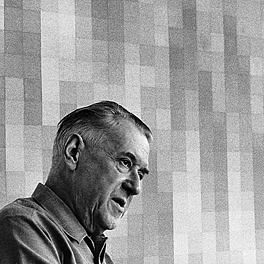Richard Paul Lohse was a Swiss artist, renowned for his role in the development of concrete art and his systematic approach to abstraction. Born in Zurich, Switzerland, Lohse began his artistic journey at the Zurich School of Arts and Crafts, initially working as a graphic designer before focusing on painting. His work is defined by geometric abstraction, exploring the relationship between color, form, and structure.
In the 1940s, Lohse became deeply involved in the concrete art movement, which emphasized precise geometry and color without any representational content. His paintings, often organized in grids or systematic patterns, were carefully designed to explore color theory and visual perception. Lohse believed in color as a tool for intellectual engagement, employing it to challenge the viewer's perception and create visual harmony.
Lohse's influence extended beyond exhibitions and awards, leaving a lasting legacy in the world of concrete art. His methodical approach to color and form remains central to the study of abstraction, and his works continue to be celebrated for their intellectual rigor and aesthetic precision.

